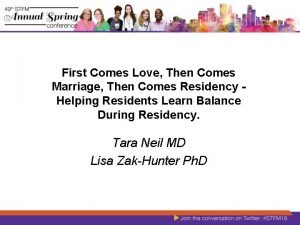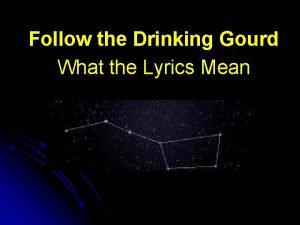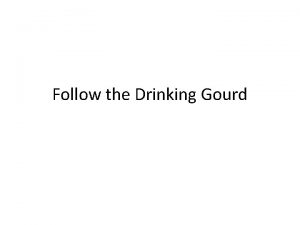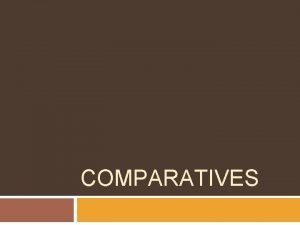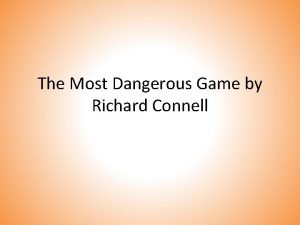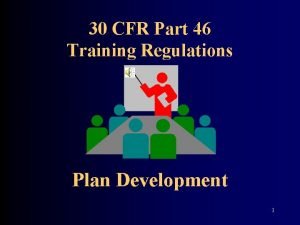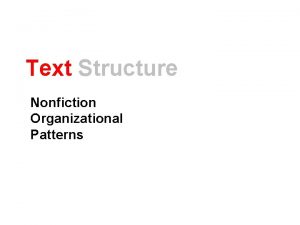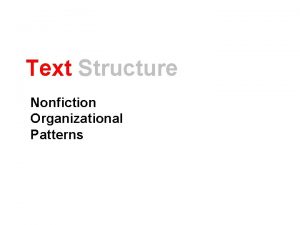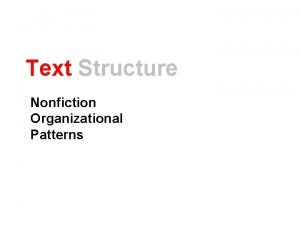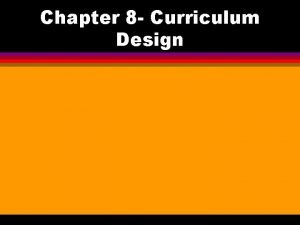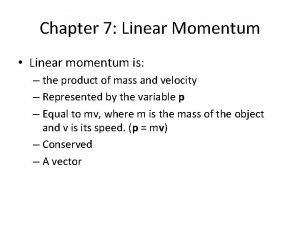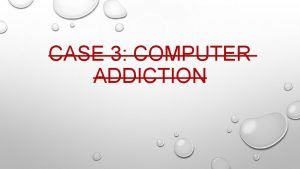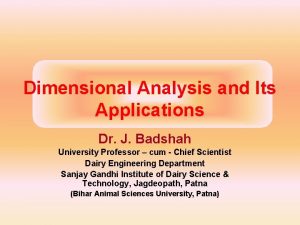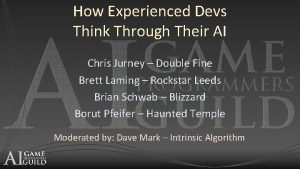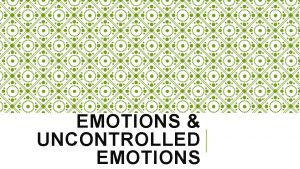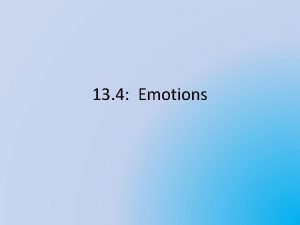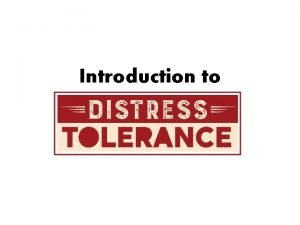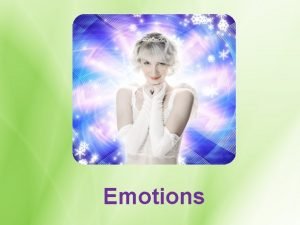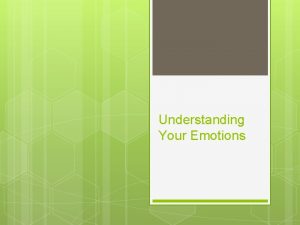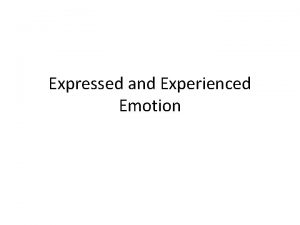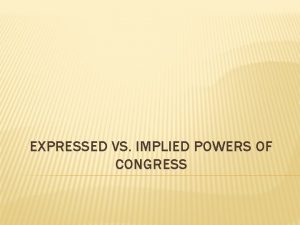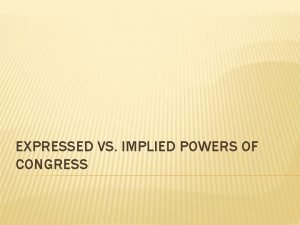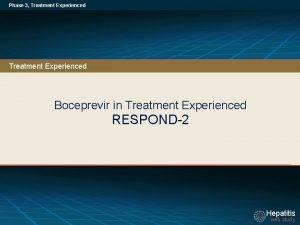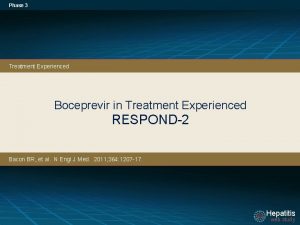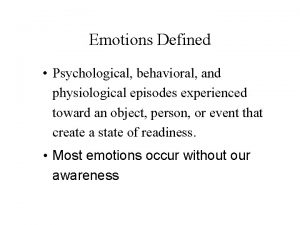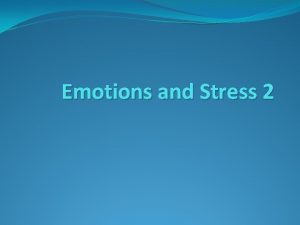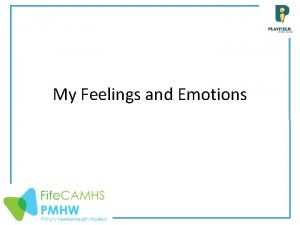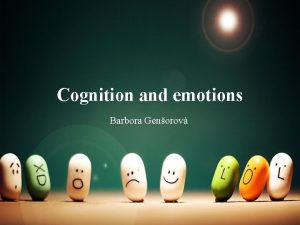Emotions Expressed and Experienced Which comes first the



























- Slides: 27

Emotions: Expressed and Experienced Which comes first the expression or the feeling? Do we know our own emotions?

LOL! Laughter • Is contagious • can provide relief from pain, alleviate stress and promote functioning of the immune system. • Can be used to promote solidarity among people -- as well as for exclusionary purposes.

Physiology and Feeling? • We often take it as a given that we experience an emotion and then our bodies react to reflect that feeling. • But it can be bi-directional. • Hold the pencil in your teeth or with your lips and read comic strips

James-Lange theory: • We feel sad because we cry, angry because our blood pressure rises, afraid because we tremble • The emotional experience is the consequence of a specific physiological reaction. – Support: Hold the pencil in your teeth or with your lips and read comic strips

Cannon-Bard Theory • Stimulus simultaneously triggers activity in the ANS and emotional experience. – Blush and feel embarrassed at the same time

2 Factor Theory • Different emotions are merely different interpretations of a general pattern of bodily activity. • Your heart beats fast…. so is it fear, anger, love, caffeine….

Love on a swinging bridge? • 1974 - Dutton and Aron • Experimental group = Young men crossing a long, narrow, suspension bridge that rocked & swayed 230 ft above a river. • Control group = Young men crossed a long, narrow, suspension bridge that rocked & swayed 230 ft above a river and “rested” for 10 minutes • Approached by an attractive female (researcher), asked to complete a survey and given her phone #. • Who called her more?

Love on a swinging bridge? • 13 out of 20 called in the experimental group, while only 7 out of 23 called from the control group. • Fear and attraction exchangeable? • Supports the 2 factor theory.

So which is correct? • Turns out that each theory has some support, but isn’t completely accurate. – We don’t just have general physiological response to emotion. -- certain combinations of physiological responses are related to certain emotions. – But we also aren’t perfectly sensitive to these combinations -- we misattribute our physiology. – The bodily reaction causes and is a consequence of the mentally feeling an emotion.

WOW! ØDo we even know our own emotions? Ø Do we know other people’s emotions!?

demonstration • Try to accurately decode the motion being expressed here. – “I’m absolutely thrilled to be here” – “Gee thanks” – “Way to go dude” – “Real nice”

demonstration • Nervousness, surprise, disgust, anger, sadness, fear, and happiness have been found in studies to be the easiest emotions to detect. Whereas love, fear, desire, jealousy, pride, disappointment and relief are much more difficult to detect. • Gender differences? • What does this mean? – the role of empathy in understanding others’ emotional reactions.

http: //www. kqed. org/quest/tele vision/emotions-revealed – Are expressions universal? • The 6: anger, disgust, surprise, fear, happiness, sadness

Cultural Differences • While it seems universal to read the 6 major emotions; there are different expectations of how people will show them. • Awlad Ali Bedouins of Egypt’s western desert do not express feelings of loss or hurt in public; instead they show indifference or anger or assign blame. • Tahitian language lacks terms for sadness, longing and loneliness; instead they interpret these sensations as a type of sickness

Lie to Me • Our attempts to obey our culture’s display rules are sometimes betrayed by incomplete control of facial muscles 15

Deceptive Expression • Humans are generally not that good at detecting when others are lying • Studies look at accuracy based on profession (100% = perfect accuracy, 50% = guessing) 16

Deceptive Expression • Polygraph – measures physiological changes associated with stress – high false positive rate • Blood flow in brain – some brain areas are more active when people lie than when they tell the truth 17

stop

The Emotional Brain • Temporal lobe syndrome • Amygdala – appraisal – bilateral amygdala damage – no effect on recognition of happiness, sadness, & surprise – trouble recognizing anger, disgust, & fear • Nucleus accumbens 19

The Emotional Brain • Amygdala – make a rapid appraisal (pink route) – why? • Cortex – make a slow, thorough appraisal (green route) – why? 20

The Emotional Brain • Emotional regulation – typically to turn negative into positive – may sometimes need to “cheer down” • Reappraisal – thinking can change feeling – shown photo of woman crying at funeral amygdala became active – asked to reappraise and imagine woman is at wedding cortex became active and then amygdala deactivated 21

Emotional Communication • Emotional expression – emotional states influence the way we talk (intonation, inflection, loudness, & duration) – listeners can infer a speaker’s emotional state with betterthan-chance accuracy – can also infer emotional states from how someone walks and facial expressions • Affective forecasting – not too good at predicting our emotional reactions to future events 22

Communicative Expression • Universality hypothesis – cross-cultural research supports this – congenitally blind persons make same expressions as others • The cause and effect of expression – feelings cause emotional expressions (muscles) – facial-feedback hypothesis – people with trouble experiencing emotions have trouble recognizing the emotions of others 23

Communicative Expression • Deceptive expression • Display rules – intensification – deintensification – masking – neutralizing 24

What Is Emotion? • Multidimensional scaling • Dimension of arousal • Dimension of valence (feeling) 25

Physiology of Emotion 26

Pg 208 in Blink • Subjects look at cartoons while holding a pen between their lips or teeth • Teeth found the cartoon much funnier • Ekman, Friesen and Levenson
 First comes love then comes marriage
First comes love then comes marriage Drinking gourd lyrics
Drinking gourd lyrics When the sun comes back and the first quail calls
When the sun comes back and the first quail calls Short adjectives
Short adjectives Luke 14 25 33
Luke 14 25 33 What comes first latitude or longitude
What comes first latitude or longitude Wish love comes
Wish love comes The most dangerous game annotation answers
The most dangerous game annotation answers Allows rapid entry of text by experienced users
Allows rapid entry of text by experienced users Have you ever experienced culture shock
Have you ever experienced culture shock Newly hired experienced miner training
Newly hired experienced miner training Devers experienced the highlight
Devers experienced the highlight Devers experienced the highlight
Devers experienced the highlight More sports at ericson genre
More sports at ericson genre Romantic design curriculum
Romantic design curriculum Calculate the impulse experienced when a 70kg person
Calculate the impulse experienced when a 70kg person Emt chapter 24 trauma overview
Emt chapter 24 trauma overview Case 3 computer addiction
Case 3 computer addiction The resistance r experienced by a partially submerged body
The resistance r experienced by a partially submerged body Experienced devs
Experienced devs Hình ảnh bộ gõ cơ thể búng tay
Hình ảnh bộ gõ cơ thể búng tay Frameset trong html5
Frameset trong html5 Bổ thể
Bổ thể Tỉ lệ cơ thể trẻ em
Tỉ lệ cơ thể trẻ em Chó sói
Chó sói Tư thế worm breton là gì
Tư thế worm breton là gì Bài hát chúa yêu trần thế alleluia
Bài hát chúa yêu trần thế alleluia Các môn thể thao bắt đầu bằng từ đua
Các môn thể thao bắt đầu bằng từ đua
